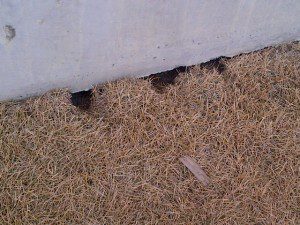Vole Control Tips to Maintain Your Yard and Gardens
Vole Control Tips to Maintain Your Yard and Gardens
Blog Article
Comprehensive Guide to Effective Vole Insect Control: Infestation Recognition and Treatment Approaches
In the realm of efficient parasite control, vole problems present an unique difficulty that demands a critical approach. By discovering the nuances of vole habits, recognizing key signs of invasion, and reviewing a variety of control choices, one can develop an extensive strategy to deal with these evasive insects.
Recognizing Vole Behavior
Vole behavior is identified by their delving routines and quick reproduction rates, making them a tough pest to manage efficiently. Their rapid reproductive price further makes complex control initiatives, with women qualified of producing numerous litters in a solitary year, each consisting of several children.
Voles are most active during the early morning and night hours, spending most of their time foraging for food. Their burrowing habits not only disrupt gardens and grass however additionally make them challenging to eliminate and discover. Recognizing vole habits is crucial for effective bug control methods. By determining their burrow locations, checking feeding areas, and applying targeted control approaches, such as capturing or habitat alteration, vole invasions can be handled efficiently.
Indicators of Vole Problem

Prevention Techniques
Executing reliable prevention techniques is essential in reducing vole infestations and protecting plant life from their damaging feeding behaviors (vole pest control). To avoid vole invasions, it is vital to begin by getting rid of prospective food resources and sanctuary. Maintain yard and vegetation trimmed short, remove weeds and debris, and preserve a tidy yard or grass to make the area less appealing to voles. Mounting barriers such as hardware fabric or below ground fence can also aid hinder voles from getting in details locations. Furthermore, minimizing excess dampness by repairing dripping pipes and ensuring proper drainage can make the setting much less hospitable for voles.
Regularly examining the home for indications of vole activity, such as runways and burrow openings, is critical for early learn the facts here now detection and punctual activity. If vole task is believed, take into consideration utilizing repellents or catches purposefully positioned near their pathways.
Non-Lethal Control Approaches
To successfully handle vole populations while focusing on gentle techniques, non-lethal control check my source strategies supply practical options for lowering vole damage in landscapes and gardens. These obstacles can be buried at least 12 inches deep and bent at a 90-degree angle to protect against voles from burrowing below.

Lethal Control Options
One efficient method for attending to vole problems in yards and landscapes entails the critical use lethal control alternatives. When confronted with a serious vole problem that non-lethal approaches have stopped working to have, executing deadly control procedures ends up being essential. One commonly utilized dangerous control option is making use of breeze catches. These traps are created to swiftly and humanely kill voles upon activation, making them a preferred selection for several garden enthusiasts and landscapers. To raise the performance of breeze catches, it is suggested to put them in locations where vole activity is high, such as along paths or near burrow entrances. One more deadly control option is the application of hazardous lures specifically created to about his target voles. These baits have toxin that is ingested by the voles, causing their eventual demise. However, caution has to be worked out when using hazardous baits to stop harm to non-target animals or pets. Generally, when using deadly control choices, it is necessary to do so properly and according to neighborhood laws to successfully handle vole infestations.
Conclusion
To conclude, reliable vole insect control calls for a thorough understanding of vole habits, identification of indications of invasion, execution of prevention techniques, and application of both non-lethal and lethal control methods. By incorporating these approaches, people can properly handle vole populations and shield their property from damages. It is very important to resolve vole invasions without delay to avoid more issues and decrease the influence on the surrounding setting.
Given the intricate tunnel systems and rapid recreation rates characteristic of voles, recognizing the signs of vole invasion ends up being crucial in reliable insect control. One of the primary indications of vole visibility is the presence of surface runways or tracks in lawn or snow, usually regarding 1-2 inches vast, developed as voles take a trip in between their burrows and food resources.To efficiently manage vole populaces while prioritizing gentle approaches, non-lethal control strategies use useful options for lowering vole damage in yards and landscapes.One reliable method for dealing with vole problems in landscapes and gardens involves the critical usage of deadly control options. vole lawn damage.In verdict, efficient vole insect control needs an extensive understanding of vole actions, recognition of signs of problem, application of prevention methods, and application of both deadly and non-lethal control techniques
Report this page